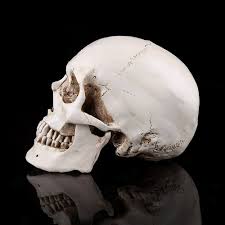The Human Skull: Structure, Function, and Importance

Introduction
The human skull is a crucial part of the human anatomy, serving as the protective case for the brain and a framework for the face. Understanding its structure and functions is vital for medical professionals, anthropologists, and anyone interested in human biology. Recent studies highlight new insights into the evolution and functionality of the human skull, making it a relevant topic in both scientific and educational circles.
Structure of the Human Skull
The adult human skull consists of 22 bones divided into two main parts: the cranium and the facial bones. The cranium, formed by 8 bones, encases and protects the brain, while the facial skeleton, made up of 14 bones, supports the facial structure and houses the dental apparatus. Key bones include the frontal, parietal, temporal, and occipital bones in the cranium, and the maxilla, mandible, and zygomatic bones in the facial region.
Functions of the Skull
The primary role of the skull is to safeguard the brain from physical trauma. It also plays a pivotal role in the sensory organs, as several bones form the orbits for the eyes and nasal cavities for the sense of smell. Additionally, the skull provides anchorage for the teeth and supports critical functions such as feeding, respiration, and communication. Interestingly, research in anthropology has shown that the shape and structure of human skulls can provide significant insights into evolutionary adaptations and human diversity.
Recent Findings in Skull Research
Recent studies have advanced our understanding of the human skull’s evolution. For instance, an examination of ancient human fossils has revealed variations that suggest how different environments influenced skull shape and functionality. Moreover, researchers have started utilising modern imaging techniques to better understand the biomechanics of the skull, offering potential insights into traumatic brain injuries and the long-term effects of concussions.
Conclusion
The human skull is more than just a protective shell; it is a complex structure vital to many of life’s most critical functions. As research continues to evolve, our understanding of its role in human biology and evolution will only deepen. For readers, appreciating the intricacies of the skull can enhance one’s understanding of health, biology, and anthropology. Looking ahead, groundbreaking techniques and discoveries will likely shed further light on the mysteries of the human condition, with the skull at the forefront of these scientific inquiries.
